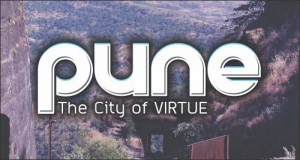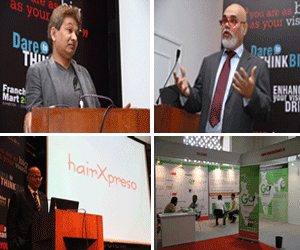
CITY FOCUS PUNE
Pune is known as the cultural capital of Maharashtra due to the various events and festivals that bring the artistic traditions in front of everyone. Pune or the Queen of Deccan is known for its educational, research and development institutions. The city of Pune has been at the helm of affairs since the ancient times. This home town of Marathas was the cradle of Shivaji Bhonsle. Many edifices standing tall in Pune tell the story of the glorious past of this city.
Punes history dates back to nearly to 1600 years. The first proof of people living in Pune is in the Pataleshvar caves dating back to the 5TH century. The Rashtrakut kings built a temple of Shiva known as Punyeshwar, which was later destroyed by the Sultans attack on the city in 13th century. Located at a distance of approximately 120 km from Mumbai, the city is one of major tourist destinations in India.
Pune is also one of the largest urban agglomerations in India. Pune city is situated at the eastern edge of the Western Ghats on the Deccan plateau, at an altitude of 559 m above sea level. Initially developed as an agricultural settlement, Pune city now counts amongst the most developed cities of India. There is a lot to be said about Pune being called Oxford of the East. Simply put, Pune is a bona fide, one hundred percent university town. Although town it isnt, it seems too much to call it a University City. There are colleges and institutes galore here.
From engineering (COEP) to medicine (BJ), arts (FC) to science (SP), Pune has everything. And it has the single most variety of students in India; besides, there are students from outside India. What this all means is that in Pune, youre always young.
Pune epitomizes the Marathi culture, which lays emphasis on which education, arts and crafts, music, theatre, etc. Every year, it plays host to Savai-Gandharva, a three nightlong cultural program of vocal and instrumental classical music. Pune culture reflects a blend of traditions with modernity. On one hand, you have classical shows being performed in the city, on the other, the city boasts of an amazing nightlife.
The city of Pune has some form of entertainment for each and every person. For those interested in art and culture, there are the numerous art galleries and auditoriums of the city. While, the film or shopping enthusiasts can spend their time in the multiplexes or shopping malls of Pune. One thing is for sure, you will never find any dearth of the ways of entertainment in Pune.
Geography of Pune
Pune is located 560 m (1,840 ft) above sea level on the western margin of the Deccan plateau. It is situated on the leeward side of the Sahyadri mountain range, which form a barrier from the Arabian Sea. It is a relatively hilly city, with its tallest hill, Vetal Hill, rising to 800 m (2,600 ft) above sea level.
Just outside the city, the Sinhagad fort is located at an altitude of 1300 m. Central Pune is located at the confluence of the Mula and Mutha rivers. The Pavana and Indrayani rivers, tributaries of the Bhima river, traverse the northwestern outskirts of metropolitan Pune. Pune lies very close to the seismically active zone around Koyna Dam, about 100 km (62 mi) south of the city.
Climate of Pune
The climate of Pune is quite pleasant. Pune has three distinct seasons: summer, monsoon and winter. Summers are typically hot with maximum temperatures ranging from 35 to 42°C. The warmest month in Pune is generally April as compared to the rest of the Deccan Plateau where it is May.
Pune does not get very hot, even during peak summer the air is cool and even standing under a tree can give respite from the heat. However, as sunlight can be intense leading to skin tan and sun-burn, be sure to carry and use sunscreens (above SPF-30). The nights in Pune are significantly cooler than most other parts in this region owing to its high altitude. The average rainfall is approx 550mm. The city often receives local and heavy thundershowers with heavy downpours in May, which brings down the temperature.
Administration of Pune
The city of Pune is managed by the Pune Municipal Corporation (PMC). The Corporation consists of 149 directly elected councilors, who are led by the Mayor of Pune, a titular position mainly acting as an ambassador and representative of the city.
Actual executive power is vested in the Municipal Commissioner, an officer of the Indian Administrative Service who is appointed by the Government of Maharashtra.
Apart from the PMC, four other administrative bodies are active within the Pune Metropolitan Area:
Pimpri-Chinchwad Municipal Corporation (PCMC), responsible for Pimpri-Chinchwad and its surroundings.
Khadki Cantonment Board (KCB), responsible for Khadki.
Pune Cantonment Board (PCB), responsible for Pune Cantonment.
Dehu Road Cantonment Board, responsible for the Dehu Road area.
Demographics of Pune
As per the 2010 Census of India estimate, the population of the Pune urban agglomeration is to peg around 5,518,688. This includes the towns of Khadki, Pimpri-Chinchwad and Dehu. Growth in the software and education sectors has led to an influx of skilled labour from across India. The population of the urban agglomeration was estimated to be around 4,485,000 in 2005. The migrating population rose from 43,900 in 2001 to 88,200 in 2005.
According to the Pune Municipal Corporation, 38.9% of the population lived in slums in 2001. The sharp increase in censorial decade of 1991–2001 can be attributed to the absorption of 38 fringe villages into the city.
The literacy rate is about 81%. Marathi is the official and most widely spoken language, while Hindi and English are understood and spoken widely. Pune has a great Marathi influence as it was the bastion of the Maratha Empire.
Transportation in Pune
Pune is a major transportation hub for Western Maharashtra. It serves as the gateway for the numerous hill stations in the Sahyadri Hills.
By Road: Pune is well-connected to other cities by Indian highways and state highways. National Highway 4 (NH 4) connects it to Mumbai, Bangalore and Kolhapur. NH 9 to Hyderabad, and NH 50 to Nashik. State highways connect it to Ahmednagar, Aurangabad, and Alandi.
The Mumbai-Pune Expressway, Indias first six-lane high-speed expressway, was built in 2002, and has reduced travel time between Pune and Mumbai to almost two hours. Both public and private transports are popular in Pune. Public buses within the city and its suburbs are operated by the Pune Mahanagar Parivahan Mahamandal Limited (PMPML). The PMPML operates the Pune Bus Rapid Transit system, the first of its kind in India, in which dedicated bus lanes allow buses to travel quickly through the city.
By Rail: Local trains (EMUs) connect Pune to the industrial town of Pimpri-Chinchwad and the hill station of Lonavala, while daily express trains connect Pune to Mumbai, Howrah, Delhi, Jammutawi, Chennai, Hyderabad, Bangalore, Goa, Varanasi, and Jamshedpur. A rapid transit system has been proposed in Pune and is scheduled to begin operations in 2013.
Pune Metro Rail is being planned in consultation with Delhi Metro Rail Corporation Limited, the corporation which built and operates the Delhi Metro. It will be a combination of elevated and underground sections, with initial routes being planned between Pimpri-Swargate and Vanaz-Ramwadi.
By Air: Pune International Airport is an international airport at Lohegaon, operated by the Airports Authority of India. It shares its runways with the neighboring Indian Air Force base. In addition to domestic flights to all major Indian cities, this airport serves international direct flights to Dubai (operated by Air India Express) and to Frankfurt (operated by Lufthansa).
The Maharashtra Industrial Development Corporation is responsible for the design and construction of a new Pune International Airport. The area between Chakan and Rajgurunagar, around the villages of Chandus and Shiroli, is currently being considered as a construction site. If constructed here, it will be at a distance of 40 km (25 mi) from central Pune.
Culture of Pune
Pune is said to be the cultural capital of the state of Maharashtra. It epitomizes the Marathi culture, which lays emphasis on which education, arts and crafts, music, theatre, etc. Every year, it plays host to Savai-Gandharva, a three nightlong cultural program of vocal and instrumental classical music. Pune culture reflects a blend of traditions with modernity. Pune is the birthplace of the great poet-saint, Tukaram. At the same time, the city claims the honor of being the home of great freedom fighters like Bal Gangadhar Tilak, Gopal Krishna Gokhale, etc. The culture of Pune is well reflected through its cuisine, people, languages, etc.
Read on to get more information on the cultural heritage of Poona, India.
The local cuisines of Pune retain the typical taste of coconut and garlic. At the same time, a large amount of green chilies are used, making the dishes quite spicy. The main course in the traditional food of Poona comprises of a number of food items made up of jowar and bajra.
The most common language of Pune, spoken by majority of the population, is Marathi.
Infact, Marathi is the official language of state of Maharashtra. Apart from Marathi, Hindi is also one of the languages used commonly in Pune and is used widely throughout the city.
The city of Pune has acquired a cosmopolitan identity. People belonging to different castes, creeds, religions and economic backgrounds can be found here. With the setting up of software companies and professional institutions in Pune, the city has assumed a multi-ethnic personality.
A number of religions are followed in the city of Pune. As more and more people are shifting to Pune, either to study or to work, the religious identity of the city is undergoing a major change. People belonging to varied religious backgrounds are living in the city, making it an assortment of sorts.
Media in Pune
Marathi language newspapers such as Sakal, Loksatta, Lokmat, Kesari, Maharashtra Times and Pudhari are popular. Major English dailies in the city are The Times of India, Indian Express, Pune Mirror, Sakal Times and Daily News Analysis (DNA) have editions based in Pune, with additional local supplements. Theres also an all Youth Tabloid called TILT – The ILIKE Times.
Pune has FM Radio services running for the last few years. Though Radio Mirchi (98.3 MHz) tops the popularity rating (it being the first of Private FM channels being introduced in the city), AIR FM (101.MHz), Radio City(91.10), Radio One (94.30), Red FM (93.5) and Vidyavaani (107.4 University of Punes own FM Channel) have their audiences as well, which they very well enjoy.
Education in Pune
Pune has more than a hundred educational institutes and nine universities, students from all over the world studying at the colleges of the University of Pune. After the fall of the Marathas in 1818 and establishment of educational institutions by the British, Pune came to be referred to as the Oxford of the East, due to its large student population, and a large number of qualities academic and research institutes. Pune has more schools, colleges and universities than any other city in the world.
Top ranked engineering colleges such as College of Engineering, Pune(COEP), Maharashtra Institute of Technology, Vishwakarma Institute of Technology and Pune Institute of Computer Technology are located in the city. The National Defence Academy, Film and Television Institute of India, Dnyaneshwar Vidyapeeth, National Film Archives, Armed Forces Medical College and National Chemical Laboratory were established in Pune after the independence of India. Symbiosis International University, which operates 33 different colleges and institutions in the city which includes colleges like Symbiosis Institute of Business Management (SIBM), which is ranked amongst the top management institutes in the country.
Economy of Pune
As one of the largest cities in India, and as a result of its many colleges and universities, Pune is emerging as a prominent location for IT and manufacturing companies to expand. Pune has the sixth largest metropolitan economy and the second highest per capita income in the country (Chandigarh is first).
The automotive sector is prominent in Pune. It is home to the Automotive Research Association of India, which is responsible for the homologation of all vehicles available in India. All sectors of the automotive industry are represented, from two-wheelers and autorickshaws to cars, tractors, tempos, excavators and trucks. Automotive companies like Tata Motors, Mahindra Mahindra, Mercedes Benz, Force Motors (Firodia-Group), Kinetic Motors have set ups in Pune. Indias largest engineering conglomerate, the Kirloskar Group, was the first to bring industry to Pune by setting up Kirloskar Oil Engines Ltd. in 1945 at Kirkee in Pune. The Group was originally set up in Kirloskarwadi. Kirloskar Brothers Limited (Indias largest manufacturer and exporter of pumps and the largest infrastructure pumping project contractor in Asia), Kirloskar Oil Engines (Indias largest diesel engine company), Kirloskar Pneumatics Co. Ltd. and other Kirloskar companies are based in Pune.
The Hinjawadi IT Park (officially called the Rajeev Gandhi IT Park) is a project being started by MIDC to house the IT sector in Pune. When completed, the Hinjawadi IT Park is expected to have an area of about 2,800 acres (11 km2). The estimated investment in the project is 60 crore (US$13.38 million). To facilitate economic growth, the government made liberal incentives in its IT and ITES Policy, 2003 and leased properties on MIDC land.[42] The IT sector employs more than 70,000 people. Major software companies in Pune include Infosys, Persistent Systems, Geometric Limited, Symphony Services, Wipro, TCS, Cognizant, Symantec, Tech Mahindra, Syntel, Fujitsu Cybage and IBM global. Software giant Microsoft intends to set up a 700 crore (US$156.1 million) project in Hinjewadi.
There are many real estate developers who are building properties in Pune like Tata Housing Development Company and many others. TATA Housing is present in Pune with its projects La Monatana and Inora Park. There are many other builders who are considering pune as a lucrative market for development of real estate primarily because of its closeness to Mumbai and the Express Highway which gives the drivers a sheer driving pleasure. ABIL is one of the leading infrastructure development companies in Pune.
Todays Pune is very different from yesteryears; this eighth largest metropolis in India, also termed Queen of Deccan has fast evolved into a thriving centre of business and education.
The Puneite is definitely much more relaxed and friendly than the average Bombayite. A warm greeting about his wellbeing will do him in and mind you, hes very touchy about Pune.
The most outstanding aspect of Pune and its people is the sound balance they have maintained between modernity and their age-old rich culture and tradition. No wonder, its called the Cultural Capital of Maharashtra as well as The Oxford of the East. Pune was home to some of the fiery personalities who wrote the eventful pages of Indias freedom struggle. Mahatma Gandhi rightly said that Pune is a bee-hive of dedicated workers for a noble cause.






























 +91 9909960054
+91 9909960054
Pingback: Reno
Pingback: PC-urgence.com
Pingback: moncler jacket